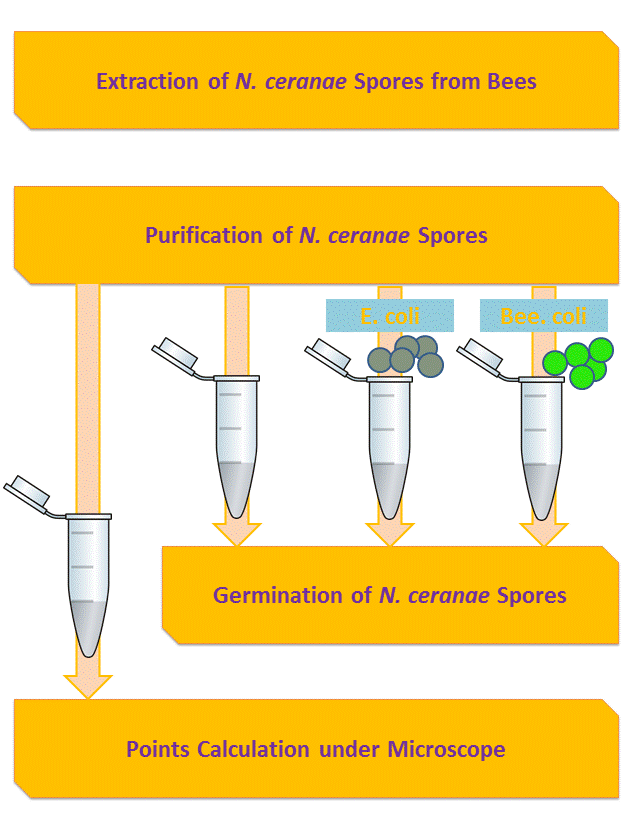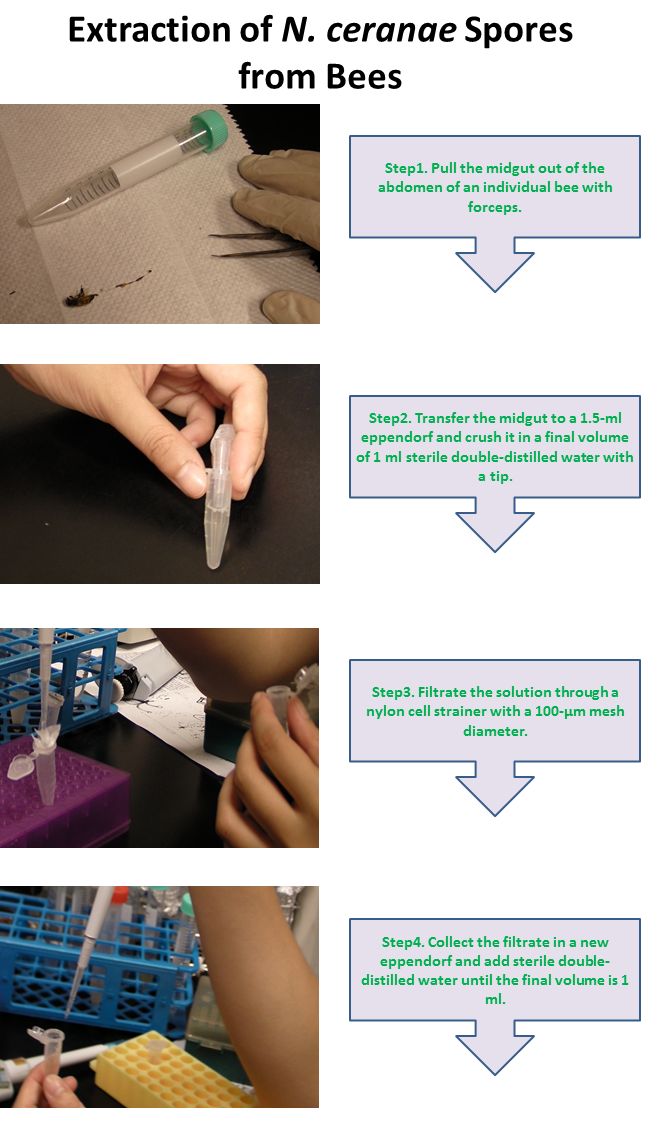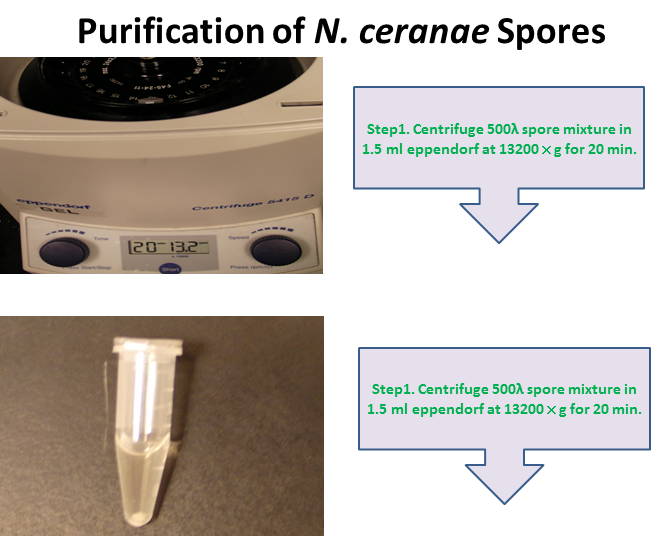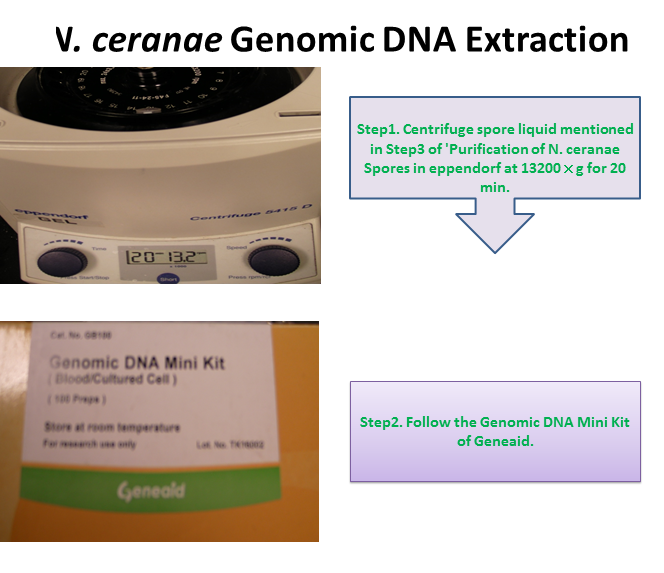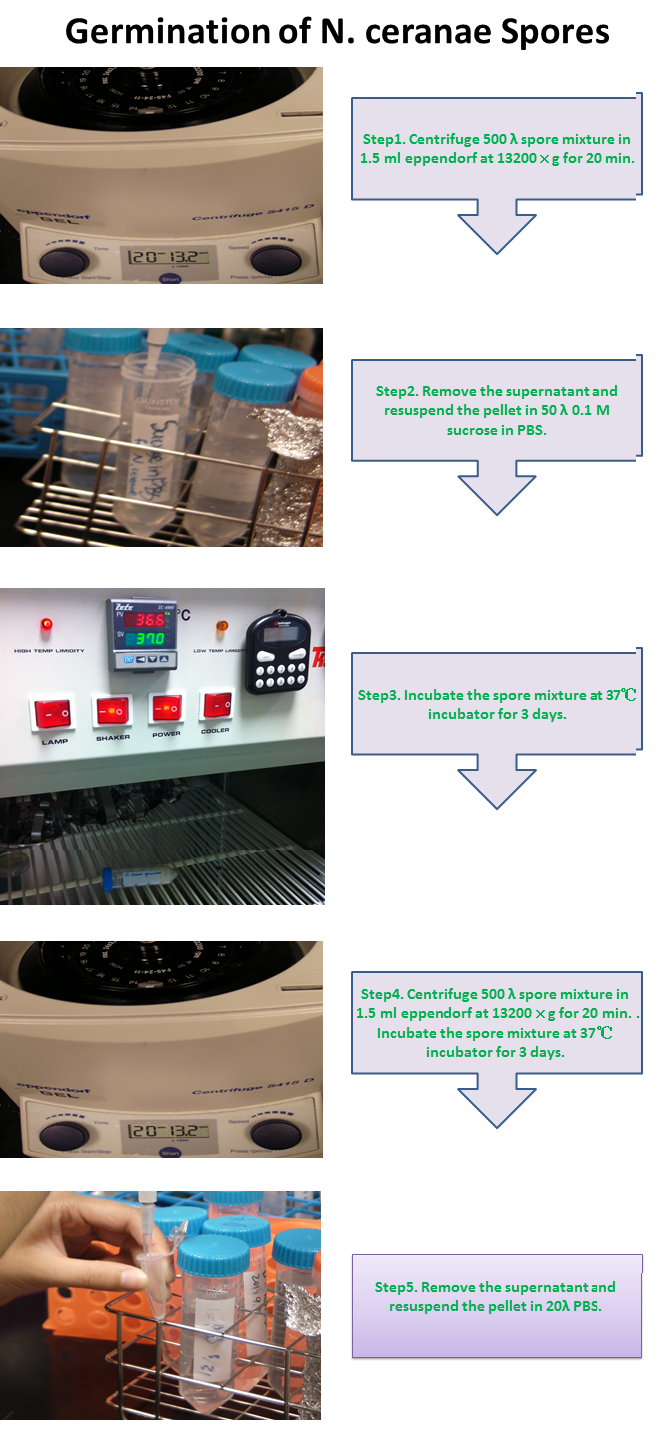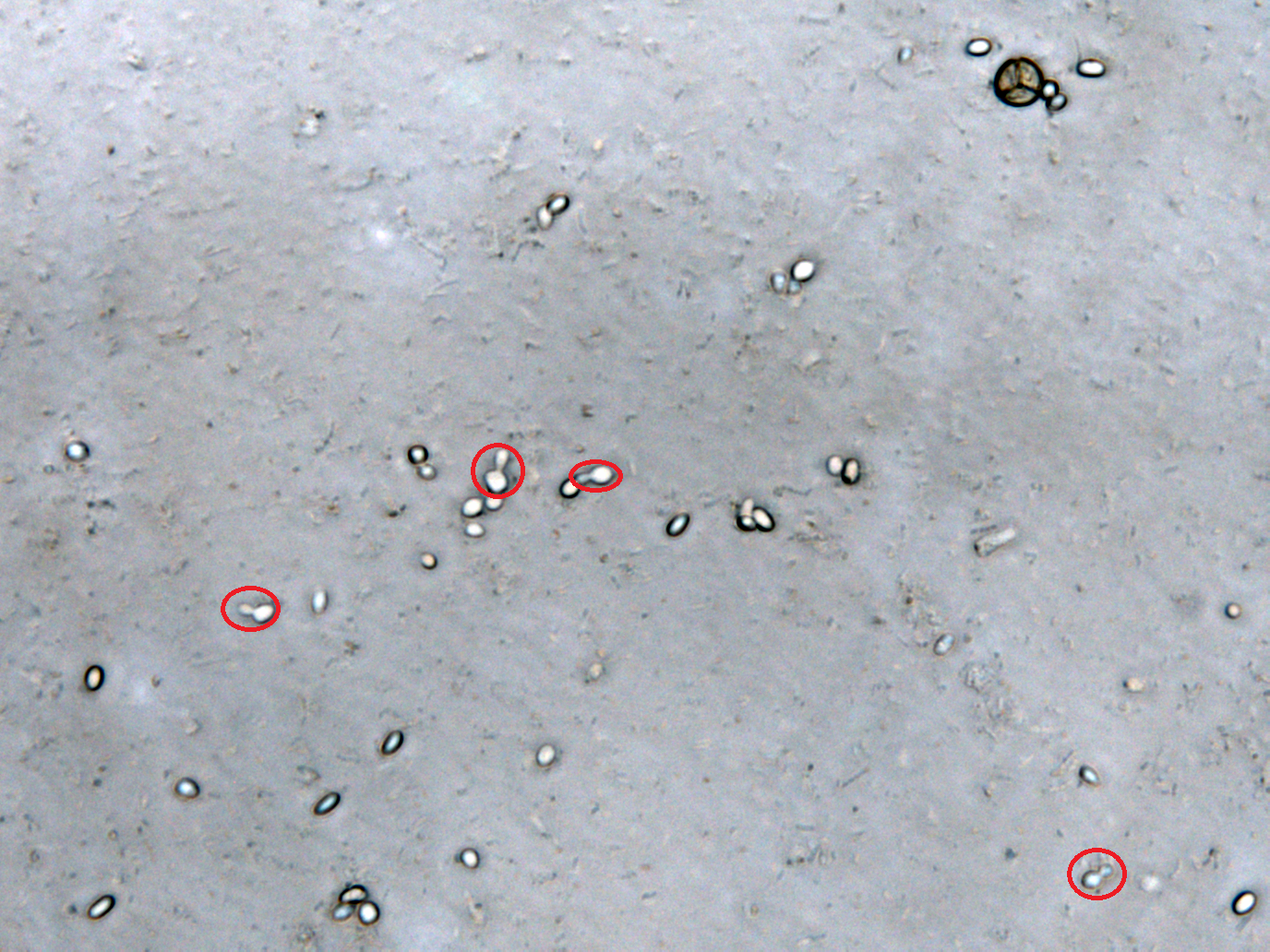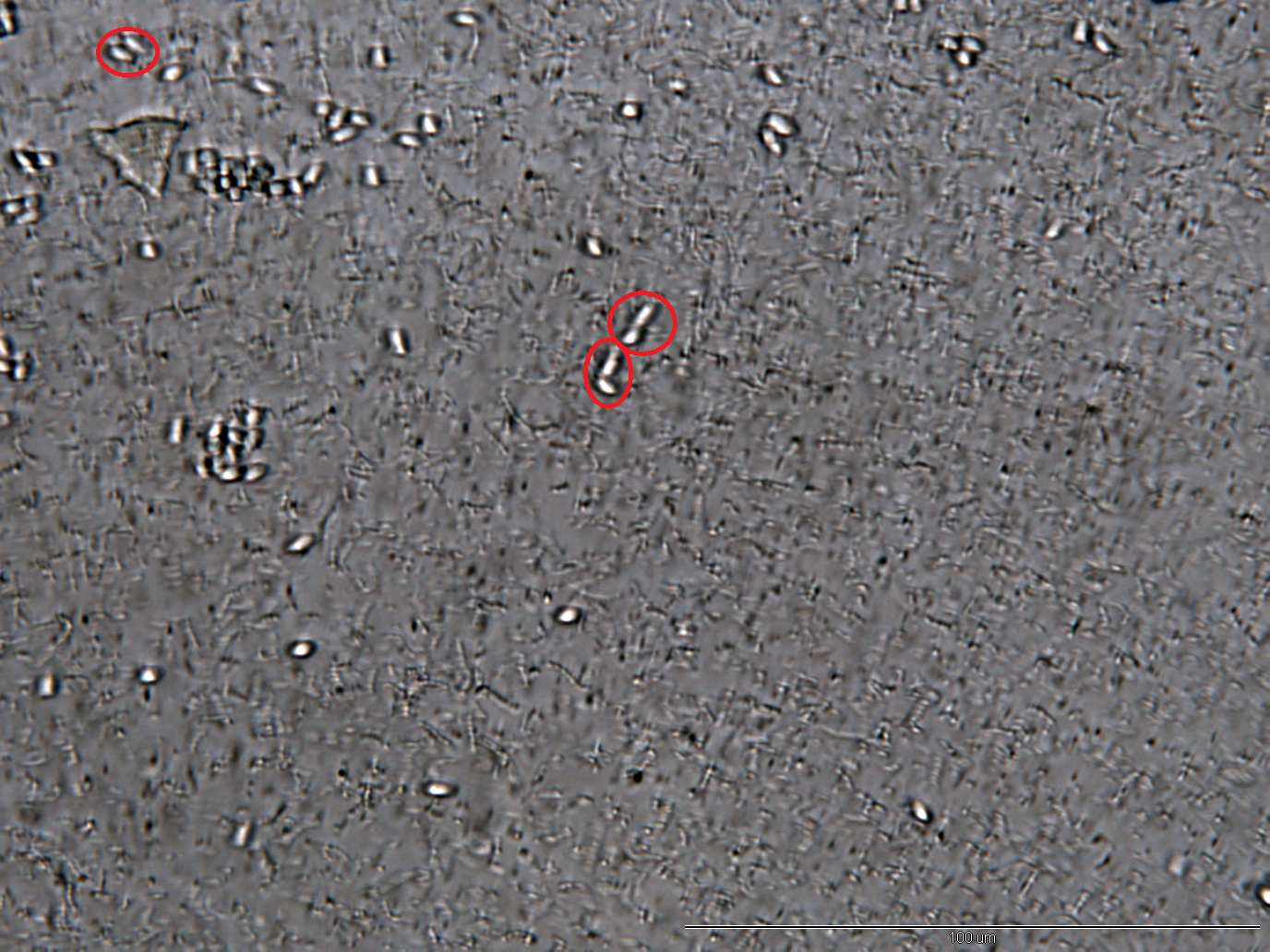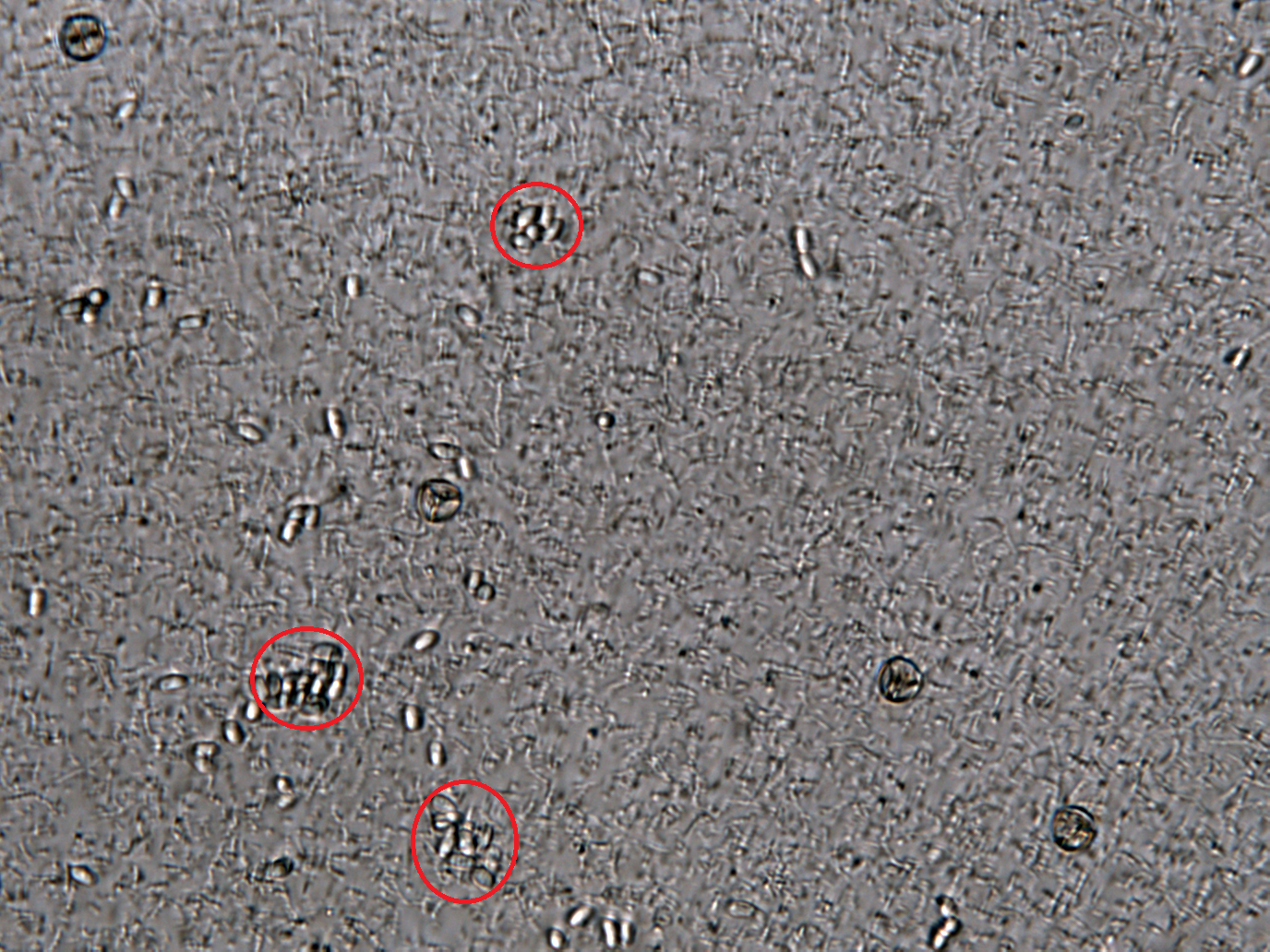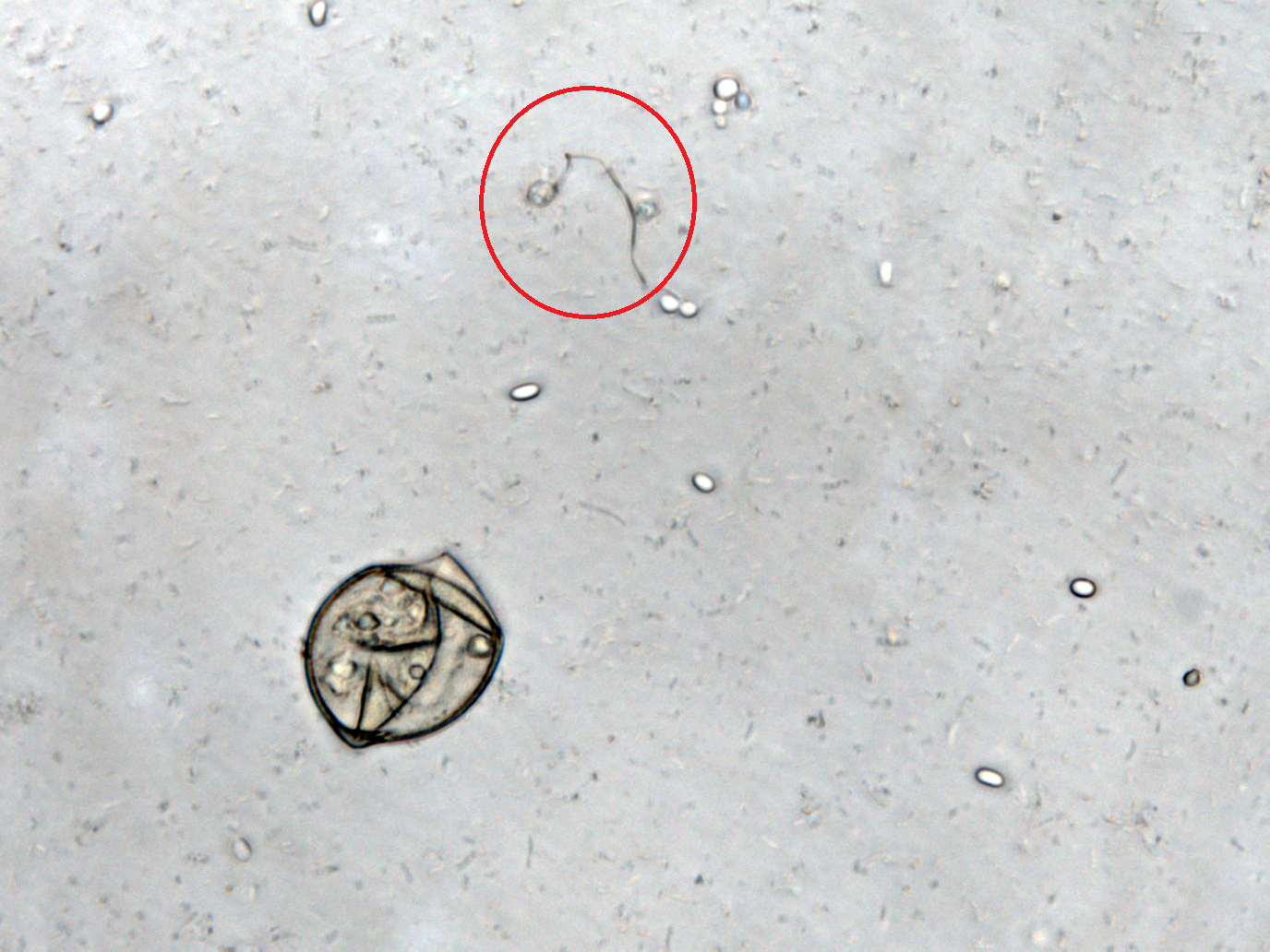Team:NYMU-Taipei/Experiment/Wet Lab
From 2013.igem.org
(Difference between revisions)
Mastershot (Talk | contribs) |
|||
| Line 1: | Line 1: | ||
{{:Team:NYMU-Taipei/Header}} | {{:Team:NYMU-Taipei/Header}} | ||
| - | =N. ceranae | + | ==Coding Sequence Testing== |
| - | ==Extraction of N. ceranae Spores from Bees== | + | [[File:Nymu 流程圖.png|frame|center]] |
| + | ==N. ceranae Experiment Protocols== | ||
| + | ===Extraction of N. ceranae Spores from Bees=== | ||
[[File:Extraction.png|frame|center]] | [[File:Extraction.png|frame|center]] | ||
| - | ==Purification of N. ceranae Spores== | + | ===Purification of N. ceranae Spores=== |
[[File:Nymu-Purification.png|frame|center]] | [[File:Nymu-Purification.png|frame|center]] | ||
| - | ==N. ceranae Genomic DNA Extraction== | + | ===N. ceranae Genomic DNA Extraction=== |
[[File:Nymu-Genomic.png|frame|center]] | [[File:Nymu-Genomic.png|frame|center]] | ||
| - | ==Germination of N. ceranae Spores== | + | ===Germination of N. ceranae Spores=== |
[[File:Nymu-Germination.PNG|frame|center]] | [[File:Nymu-Germination.PNG|frame|center]] | ||
| - | |||
| - | |||
We define the germination degree as follows: | We define the germination degree as follows: | ||
{| | {| | ||
| Line 20: | Line 20: | ||
|[[File:Nymu-POINT 2.png|thumb|250px|''' 3 points:A cluster of duplicated spores is formed.''']]||[[File:Nymu-Tv10 ptp unsure.PNG|thumb|250px|''' 4 points:A Spore extrude a polar filament.''']] | |[[File:Nymu-POINT 2.png|thumb|250px|''' 3 points:A cluster of duplicated spores is formed.''']]||[[File:Nymu-Tv10 ptp unsure.PNG|thumb|250px|''' 4 points:A Spore extrude a polar filament.''']] | ||
|} | |} | ||
| + | And so far we have accomplished experiments of the first two groups, discovering that spores underwent the germination procesure got much more points than the control group. Next we will compare the points of group 3 and group 4 to see if Bee. coli can inhibit the germination of N. ceranae. | ||
| - | |||
| - | |||
| - | |||
{{:Team:NYMU-Taipei/Footer}} | {{:Team:NYMU-Taipei/Footer}} | ||
Revision as of 14:14, 27 September 2013


National Yang Ming University
Contents |
Coding Sequence Testing
N. ceranae Experiment Protocols
Extraction of N. ceranae Spores from Bees
Purification of N. ceranae Spores
N. ceranae Genomic DNA Extraction
Germination of N. ceranae Spores
We define the germination degree as follows:
And so far we have accomplished experiments of the first two groups, discovering that spores underwent the germination procesure got much more points than the control group. Next we will compare the points of group 3 and group 4 to see if Bee. coli can inhibit the germination of N. ceranae.
 "
"









